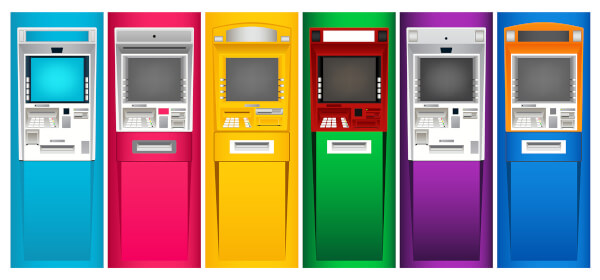Cash or card in Barbados: Which is the best way to pay?
Should you pay with cash or card in Barbados? A handy guide including cash etiquette, Barbadian ATMs and using your UK card.

Heading off abroad? You might want to pack a travel money card for your holiday spending. There are lots of them out there, and many offer an easy, secure way of financing your trip.
One of the options available to UK travellers is the Sainsbury’s Travel Money Card, formerly known as the Sainsbury’s Multi-currency Cash Passport.
But how good is it? Find out everything you need to know in our handy Sainsbury's travel card review for 2025, where we’ll look at features, fees and limits. We’ll also walk you through how the card works, its pros and cons, and how to apply for one.
We’ll even show you an alternative, the international Wise card - which lets you spend and withdraw cash in 40+ currencies in 150+ countries worldwide for low fees*. Best of all, you’re guaranteed mid-market exchange rates on every transaction.
But more on that later. For now, let’s focus on the Sainsbury’s Travel Money Card.
The Sainsbury’s Travel Money Card is a prepaid Mastercard, provided by Sainsbury’s Bank.
It works by letting you ‘load’ the card with your chosen currencies before you travel (or top up on the go), then you can only spend that amount. This is unlike an ordinary debit card which is linked to your bank account and payments are taken out of that balance.
When you land in your overseas destination, you can use the card for spending, cash withdrawals and spending online too.
You can use the Sainsbury’s Bank travel money card app to manage your card, checking the balance or loading up currencies.
Here are the main features of the Sainsbury’s travel card at a glance:¹
There are a number of different travel money cards available for UK travellers, so you may need to compare a few to find the right one for you. A good place to start is by looking at the pros and cons for each.
Let’s run through the main advantages and drawbacks of the Sainsbury’s Travel Money Card.
It’s really easy to get hold of a Sainsbury’s Travel Money card ahead of your trip.
You can order for collection at your nearest Sainsbury’s Bank bureau, or you can have it delivered to your home - both are free of charge. And for either option, you can apply online in just a few steps at the Sainsbury’s Bank website.
If you order for collection, your card should be ready to pick up the next working day. For home delivery, it’ll take much longer - around 5-8 days.¹ So make sure you leave plenty of time ahead of your trip.
To be eligible for the card, you’ll need to be:²
Sainsbury’s Bank may carry out electronic checks to verify your identity, but otherwise that’s it.
Now we come to the really important question - how much will the Sainsbury’s Travel Money Card cost you to use? Read on for info on fees and exchange rates, as well as limits for loading up funds, spending and withdrawing cash.
Here’s a look at the main fees involved with using the Sainsbury’s travel card for your holiday spending:¹
| Type | Fee |
|---|---|
| Ordering the card | Free |
| Ordering an additional/replacement card | Free |
| Loading and reloading the card | Free |
| Card payments | Free |
| ATM withdrawals | Free (ATM operators may charge a fee) |
| Cashing out at a Sainsbury’s Bank Travel Money Bureau | Free |
| Foreign exchange fee - for converting between currencies and spending in currencies not preloaded on the card | 5.75% |
| Inactivity fee (not using your card for 18 months) | £2 (or currency equivalent) a month |
Sainsbury’s Bank uses Mastercard’s exchange rates for Travel Cards, which you can check at any time here. These are the rates you get when loading your card with currencies, and you can see it before you decide to add money.
The benefit of this is that you know exactly what exchange rate you’ll be getting when you load the card, rather than at the time you spend - when you’ll be at the mercy of fluctuating rates.
If you’re converting between currencies on your card, it’s important to note that there’s a 5.75% margin added to the exchange rate.¹
This also applies for spending or cash withdrawals in any currency that isn’t already preloaded onto your card. If you make a purchase and don’t have enough in a preloaded currency balance to cover it, the remainder will be taken from another currency balance. And this means that again, the 5.75% exchange rate fee will apply.¹
The Sainsbury’s Travel Money Card does have some limits on how much you can load, spend and withdraw. Let’s take a look:²
| Type | Limit |
|---|---|
| Minimum load or reload amount | £50 |
| Maximum card balance | £5,000 |
| Maximum load amount in a 12-month period | £30,000 |
| ATM withdrawal limit | £500 per 24 hours |
| Spending limit | £3,000 per 24 hours |
After reading this, you should be all clued up on what the Sainsbury’s Travel Money Card has to offer. We’ve looked at how it works, fees, exchange rates, limits and how to order your own card ahead of your trip. It’s a pretty attractive prospect for holiday spending, but it is far from the only good option out there.
The Wise card is a fantastic alternative, letting you spend worldwide in 40+ currencies for low fees* and mid-market exchange rates. It’s a convenient contactless debit card, which can be used in shops, restaurants, public transport and pretty much anywhere that Visa and Mastercard payments are accepted.
You can also withdraw up to £200 a month from overseas ATMs fee-free (max. 2 withdrawals) - you’ll just need to watch out for ATM operator fees. And for added security, why not create a Wise virtual card? It lives on your phone, has different details to your physical card and works seamlessly with mobile wallets like Apple Pay and Google Pay.
You can manage all your Wise cards on the go using the handy Wise app. You can convert between currencies when you need to, tap to freeze your card if you lose it, and even send money to friends to cover your share of the bill.
Open a Wise account online and get your own Wise card for a one-time fee of just £7, with no monthly or subscription fees to worry about.
Sources used:
Sources last checked on date: 19-Dec-2024
*Please see terms of use and product availability for your region or visit Wise fees and pricing for the most up to date pricing and fee information.
This publication is provided for general information purposes and does not constitute legal, tax or other professional advice from Wise Payments Limited or its subsidiaries and its affiliates, and it is not intended as a substitute for obtaining advice from a financial advisor or any other professional.
We make no representations, warranties or guarantees, whether expressed or implied, that the content in the publication is accurate, complete or up to date.

Should you pay with cash or card in Barbados? A handy guide including cash etiquette, Barbadian ATMs and using your UK card.

Read our guide on ATMs abroad including networks, locations and tips on how to avoid ATM fees abroad.

Read our guide to Edinburgh Airport ATMs, including locations, fees, withdrawal limits and helpful tips to save money when you land.

Should you pay with cash or card in Albania? A handy guide including cash etiquette, Albanian ATMs and using your UK card.

Our guide to using your Virgin Money card abroad, including features, fees and exchange rates.

Read our helpful guide to Heathrow Airport ATMs, including locations, fees, withdrawal limits and tips to save money.